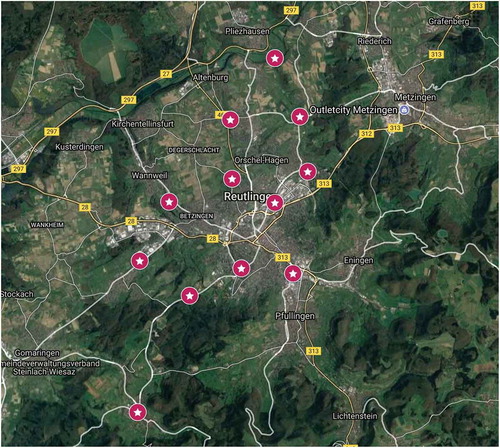Figures & data
Table 1. Areas currently covered by different cities.
Figure 1. Explanation of the methodology. D is the domain of interest, X is the centroid of D, S is the location of heaviest precipitation in D and Gi is the ith sub-area of D. For the temporal integral labels, we define ZA,D as the averaged areal precipitation over D, ZL as the precipitation at the centroid of D, ZS,D as the heaviest precipitation in D and ZG,D as the heaviest precipitation within the ith sub-area Gi. (See online version for colour versions of figures that are not colour in print.)
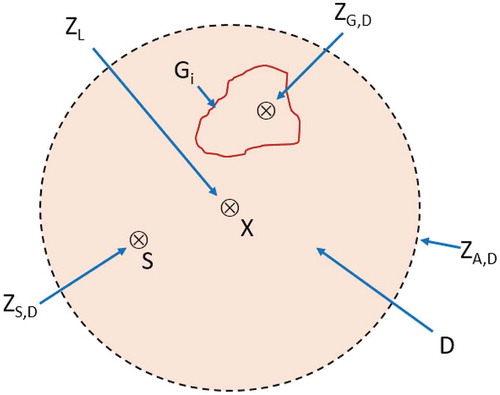
Figure 3. Distributions corresponding to the central four pluviometers in and the time aggregation of 1 h. Solid lines are the distributions of the individual stations, dashed lines are the distribution of the areal precipitation (green), the mean of the four distributions (blue), and the distribution of the maxima, ZS,D (red). The olive line shows the distribution of the maxima assuming that the stations are independent. The units on the horizontal axis are in mm and the vertical axis is cumulative probability.
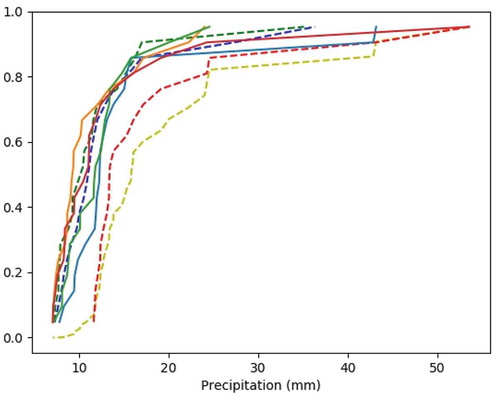
Figure 4. Distributions corresponding to the central eight pluviometers and the time aggregation of 1 h. See caption for explanation of lines and units.
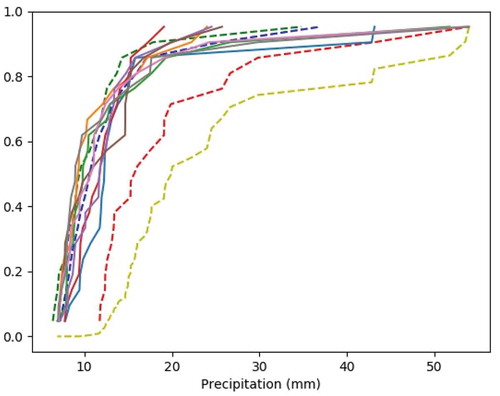
Figure 5. Distributions corresponding to the central four pluviometers and the time aggregation of 15 min. See caption for explanation of lines and units.
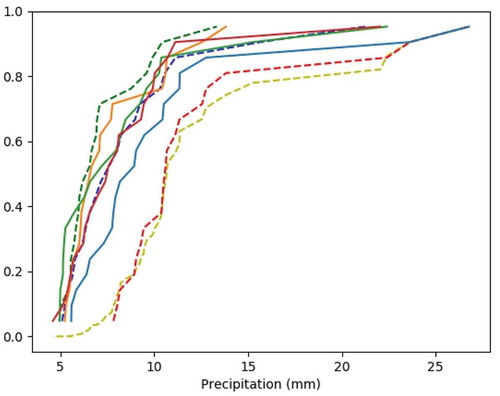
Figure 6. Distributions corresponding to the central eight pluviometers and the time aggregation of 15 min. See caption for explanation of lines and units.

Figure 7. Distributions corresponding to the central four pluviometers and the time aggregation of 3 h. See caption for explanation of lines and units.
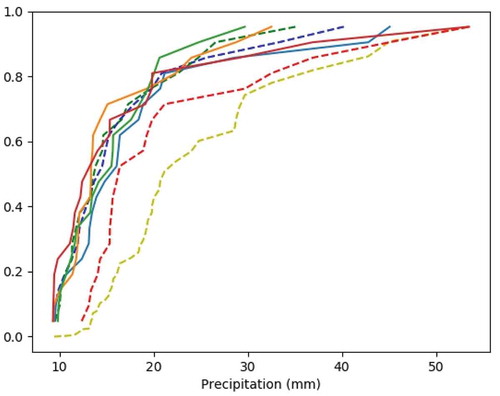
Figure 8. Distributions corresponding to the central eight pluviometers and the time aggregation of 3 h. See caption for explanation of lines and units.
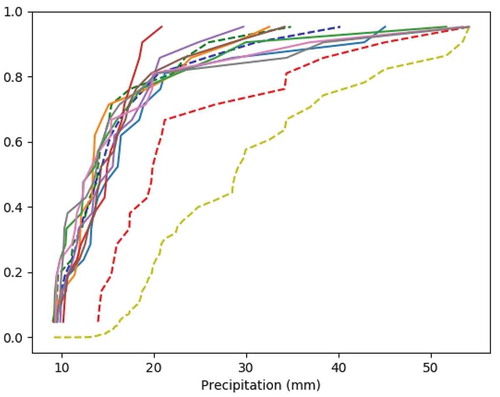
Figure 9. Configuration of the blocks considered (right). In the left figure the solid (red) line is the distribution of the maxima at the central point. The green dashed line is the distribution of the maxima of the single pixels (81 pixels each 500 m × 500 m) in the 4.5 km × 4.5 km square. The blue dashed line is the distribution of the maxima of the areal means calculated from the amounts in the nine squares (1.5 km × 1.5 km) each. Units are as in caption.

Figure 10. Stack algorithm used to simulate pseudo-random images from image scale statistics, from Clothier and Pegram (Citation2002). WAR: wetted area ratio, IMF: image mean flux.
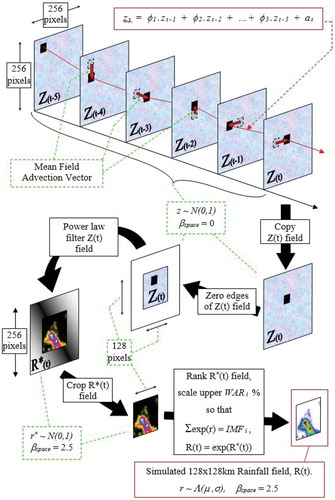
Figure 11. First, third and fifth top-ranked rainfall values of 5-min rainfall over 20 years in 1/10th mm in each 1 km2 of 10 000 pixels (ZL). The colour scale in all three panels ranges from 10 to 26 mm depth. The images in – were derived from the SBM with Gaussian spatial dependence.

Figure 12. First, third and fifth top-ranked rainfall values of 60-min rainfall over 20 years in 1/10th mm in each 1 km2 of 10 000 pixels (ZL). The colour scale in all three panels ranges from 50 to 270 mm depth.

Figure 13. First, third and fifth top-ranked rainfall values of 60-min rainfall in each pixel for the case where we have selected nine pixels centred on the middle one (ZS). The colour scale in all three panels ranges from 50 to 270 mm depth.

Figure 14. First, third and fifth top-ranked rainfall values of 60-min rainfall in each pixel for the case where we have selected 25 pixels centred on the middle one (ZS). The colour scale in all three panels ranges from 50 to 270 mm depth.

Figure 15. First, third and fifth top-ranked spatially averaged areal rainfall values of 60-min rainfall for the case where we have selected 25 pixels centred on the middle one (ZA,D). The maximum intensity of the averaged values is considerably lower than those in . The colour scale in all three panels ranges from 50 to 270 mm depth.

Figure 16. Distributions of extremes. Mauve: average of the single pixel extremes, orange: average of all the mean values over 3 × 3 blocks, blue: average of all the mean values over 5 × 5 blocks, red: average of the maxima over 3 × 3 blocks, and green: average of the maxima over 5 × 5 blocks.

Figure 17. First, third and fifth top-ranked rainfall values (generated using χ2 spatial copulas) of 60-min rainfall in each pixel for the case where we have selected 25 pixels centred on the middle one (ZS). The colour scale in all three panels ranges from 50 to 270 mm depth to compare with Figure 14.


